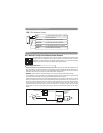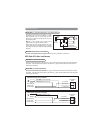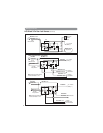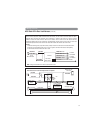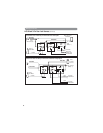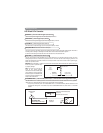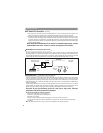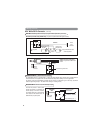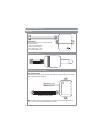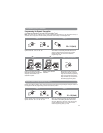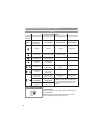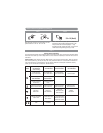
12
Brown Wire: Positive Safety Shut Down Input
This wire provides instant shutdown for the remote start, when it receives +12 volts. If the brake lights switch in
the vehicle switches +12 volts to the brake light circuit, connect this wire to the output side of the brake switch.
This will allow the remote start to shut down if an attempt is made to operate the vehicle without the key while
running under the control of the remote start. A relay may be required if the brake light switch is (-) type.
Wiring (continued)
Brake Light
Bulbs
+12 Volts
Switch Closes when
Brake is Depressed
Brown Wire
Brake
Pedal
To Lights
Black 8-Pin
Connector
2. The second best connection point for the Black/White wire is at the Parking Brake Switch output wire.
Make sure that when the parking brake is engaged that the output wire of the switch is grounded.
3. An optional remote start toggle switch can be added to temporarily disable the Remote Start Device. It can
prevent the vehicle from being remote started accidentally. This feature is useful if the vehicle is being
serviced or stored in an enclosed area. To disable the remote start, move the optional remote start enable
toggle switch to the OFF position. To enable the remote start, move the optional remote start enable toggle
switch to the ON position.
Note: When the Black/White wire is not used for it’s intended safety purpose, connect
the Black/White wire to the “Ground” or remote start system will not function.
Violet/White Wire: (-) Tachometer Signal Connection
This input provides the remote start system with information about the engine’s revolutions per minute (RPM).
It can be connected to the negative side of the coil in vehicle with conventional coils. In multi-coil and high
energy ignition system locating a proper signal may be more difficult. Once connected, you must program the
Start Feature Stage 2 to “Tachometer Checking Type" and teach the system the RPM signal (see Start Feature
Stage 2 Programming).
In multi-coil ignition system, the system can have individual coil wires. Individual coil wires in a multi-coil
ignition system will register lower amounts of AC voltage. Common locations for a tachometer wire are the
ignition coil itself, the back of the gauges, engine computers, and automatic transmission computers.
Important! Do not test tachometer wires with a test light or logic probe. Electronic
components of the ignition system will be damaged.
How to find a tachometer wire with your multi-meter:
1. Set the ACV or AC voltage *(12V or 20V is OK).
2. Attach the (-) probe of the meter to chassis ground.
3. Start and run the vehicle.
4. Probe the wire you suspect of being the tachometer wire with the red probe of the meter.
5. If this is the correct wire the meter will read between 1V and 6V
at idle, and will increase as engine RPM
increases.
Note: No connection of this wire is required, if you use the voltage or timer checking type mode.
HC8 Black 8-Pin Connector
(continued)




